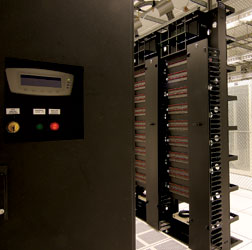... largest of its kind in the world. The company also recently signed a contract to build a solar-panel production facility in Singapore.
Bitter Pill
Formerly one of the hottest sectors in industrial process, pharmaceutical work has dried up in recent years. Phil Southerland, co-COO of Parsippany, N.J.-based Skanska USA Building, says major pharmaceutical manufacturers now are favoring smaller capital projects at existing facilities rather than building new, multi-billion-dollar plants. “We’re in as slow a cycle as I’ve seen in the 35 years that I’ve been doing this,” he says. “We’re doing about 35% of what we were just a few years ago.”
Southerland says many companies have invested billions in research and development over the last several years that has yet to pay off, while many products are coming off patent protections and can be produced by other companies. “You’ve seen the big companies like Amgen, which was one of our big customers, just put everything on hold,” he says. “It’s an industry looking for where to go next. Until they figure that out, we’re going to see a few more slow years.” Skanska is currently building a $128-million R&D facility for Johnson & Johnson in Spring House, Pa. The first phase includes a new 150,000-sq-ft research lab and renovation of 80,000 sq ft in an existing research building.
Limping Along
While the industrial sector limps along, the data-center market is sprinting ahead. Regardless of economic conditions, growing demand for higher-density computing and improved efficiency is driving billions of dollars of new work.
 Structuretone Data center projects continue to move forward.
|
Internet and computer-technology companies continue to fund many of the sector’s megaprojects. Google is building a $600-million data center in Council Bluffs, Iowa, and Oracle is planning a $285-million 200,000-sq-ft facility in West Jordan, Utah. But other owners also are pushing for major centers to handle data growth. Health Care Service Corp., a health insurer, has broken ground on a $235.5-million 250,000-sq-ft data center in Fort Worth, Texas. “Demand is not slowing down,” says Terence Deneny,, vice president of Structure Tone Inc.’s mission-critical office in New York City.
Although companies continue to fund new projects, they are being smarter about their investments. Data centers are notorious energy hogs, and with rising energy costs, clients are pushing efficiency and sustainable designs, Deneny says. “The last three or four data centers we’ve started [have had] a green requirement on them,” he says.
In August, IBM announced plans for a $360-million data center at Research Triangle Park, N.C. The company claims the center’s mechanical systems will be 50% more efficient than the industry average.
Expandable modular designs are also emerging as a popular option for clients. Rather than building a 100,000-sq-ft facility at once, some are looking at building smaller pods over time. In addition to being able to upgrade servers, modular designs allow the expandability to increase power and cooling over time.
“We’re very focused on saying, ‘Instead of spending $200 million on day one, do it for $110 million to match your current load and add the infrastructure as you need it,’” says Jakob Carnemark, senior vice president of mission critical at Skanska USA Inc. Carnemark says he expects the market to continue to grow at 10% to 20% for the foreseeable future. “I expect that will dip down at some point, but I don’t see any bottom falling out on the horizon,” he says.

Post a comment to this article
Report Abusive Comment